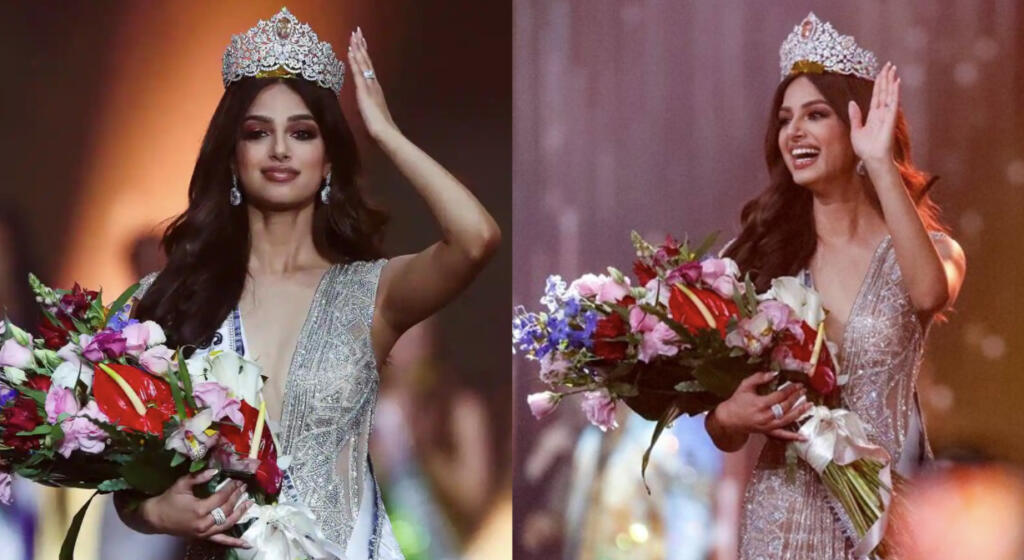So, the Miss Universe 2021 is Harnaaz Sandhu, a 21-year old Indian model. An Indian is, thus, going to bring the Miss Universe crown home after 21 years. Previously, Lara Dutta was crowned the Miss Universe in 2000. So, the question is why it took India 21 years to win the Miss Universe crown? Honestly, there were a number of deserving Indian women who participated in the beauty pageant over the last two decades or so. But it made no economic sense for an Indian woman to be crowned as the Miss Universe all this while.
What drives the Miss Universe contest results?
There is just one answer- consumerism and business. If you don’t believe us, then do ponder over this- why are second and third-world countries mostly the ones winning the beauty pageants? Again, we have a simple answer— consumerism has peaked in the Western world and there is not much scope left for cosmetic and skincare brands to grow further in these countries.
Consider this- only two French women have been crowned Miss Universe till date. The first French Miss Universe got crowned in 1953, when the pageant was started in the US. Iris Mittenaere, another French woman, won the title 64 years later. This makes sense as Paris has been the fashion capital of the world since the seventeenth century, and there is absolutely no scope of growth for cosmetic or skincare brands in this part of the world.
Venezuela, an oil-rich country, which once had a booming consumer market, has made its mark several times in the Miss Universe pageant, winning seven times. But the last time it won the crown was in 2013. This is interesting because soon after 2013 the political crisis in Venezuela spiraled. In June 2014, oil prices tanked severely and the geopolitics of oil changed the landscape of the Venezuelan economy that went from riches to rags. So Venezuela was clearly no more a target for companies that sell the luxury of say, cosmetics and hair care.
So, the Miss Universe contest moves to countries that offer ample scope of economic growth and consumer spending, especially in sectors like the cosmetics industry.
India’s tryst with the Big Four international beauty pageants:
India won the first Miss World title in the year 1966, when Reita Faria bagged the title at the Big Four international beauty pageants. However, throughout the 1970s or 1980s, India didn’t win any such title- you see, India, of course, had her own share of deserving women, but as a closed economy, the country offered no real scope of growth to international cosmetics brands.
It was only in the year 1994 that Sushmita Sen and Aishwarya Rai were crowned as the Miss Universe and the Miss World respectively. India made a grand entry at the Big Four international beauty pageants, only three years after the country opened up its economy to foreign companies in the year 1991, and showed the capability to pump up its economic growth.
Thereafter, India won a number of beauty pageants throughout the late 1990s. Diana Hayden, Yukta Mookhey, and Priyanka Chopra were crowned Miss World in the years 1997, 1999, and 2000 respectively, whereas Lara Dutta bagged the Miss Universe title in the year 2000.
In the next decade, the Big Four international beauty pageants moved to other emerging countries, and India won a solitary title in 2010, when Nicole Estelle Faria was crowned Miss Earth.
Why the Big Four international beauty pageants are looking at India again?
Here, comes the big question. In 2017, Manushi Chillar was crowned Miss World and now, Harnaaz Sandhu has been crowned the Miss Universe 2021. So, why are the big beauty pageants looking at India again? Well, it is again about the prosperous Indian economy and a growing consumer market.
India has been rising constantly as a strong economy for the past two decades. But of late, it has emerged as the fastest-growing market in the world, which is exactly the kind of market that big Western brands target.
India has also managed to revive its consumer spending and economic growth after the Pandemic, showing how it is resilient in face of global disruptions. And remember, India is a young country with an average age of 29 years and 65% of the population under the age of 35 years. India’s demographics are well-suited for international cosmetics brands and skincare products.
In fact, the Indian cosmetics industry is a fertile market for international brands. While the global cosmetics market size stood at $380.2 billion in 2019 and is expected to reach $463.5 billion by 2027, India’s cosmetics industry market value stood at a little over $15 billion in December 2020. Starting 2022, India’s beauty sector is expected to grow by 2.8%, and as such a young population with an open, growing economy makes India a likely leader in the cosmetics industry of the future. China, on the other hand, is a declining economy that also doesn’t accommodate international brands.
So, you know why Miss Universe is looking at India again- it’s all about the market and economics.
